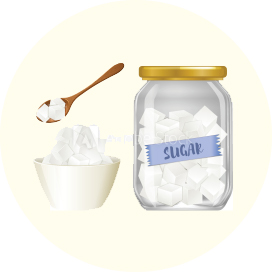What are glucides? Are they in fact sweet?

The word “glucide” conjures up something sweet. The association between glucide, sugar, and sweetness may lead some people to think that foods containing glucides are sweet.
But there are various types of glucide. Sugar is just one; some glucides are sweet, others are not.
Glucides are frequently confused with carbohydrates. Do you know how they relate to each other?
In the Standard Tables of Food Composition in Japan, carbohydrates are classified into glucides and dietary fiber. In short, glucides are part of carbohydrates (carbohydrates are a generic term for glucides and dietary fiber). Glucides are easily digested and absorbed in the body, while dietary fiber cannot easily be digested and absorbed. Since glucides are a ready source of nutrition, they constitute one of the three main nutrients (glucides, proteins, and lipids).
Relations to glucide and carbohydrates

We may have heard recently about “sugarless (sugar free) foods”, meaning that foods can be minimized easily digested and absorbed components (=glucides) from carbohydrates which are our energy source.
Incidentally, why are carbohydrates so called?
Chemists in former times noticed that carbohydrates contained carbon (C) and water (H2O) and thought that the water molecules were bound to the carbon, so named them “carbohydrates.” Today, we know that carbohydrates do not contain water molecules, but they are still referred to by the designation “carbohydrates.”
Glucides are further classified into saccharides (monosaccharides and disaccharides) according to their molecular size. Incidentally, the main ingredient of sugar is disaccharide. Compounds in which glucides are bound to proteins and lipids are called "complex carbohydrates or glycoconjugates".
The field of science devoted to research into glucides and glycoconjugates glucides is “glycoscience.” Seikagaku Corporation specializes in glycoscience and conducts research and development into drug discovery.















